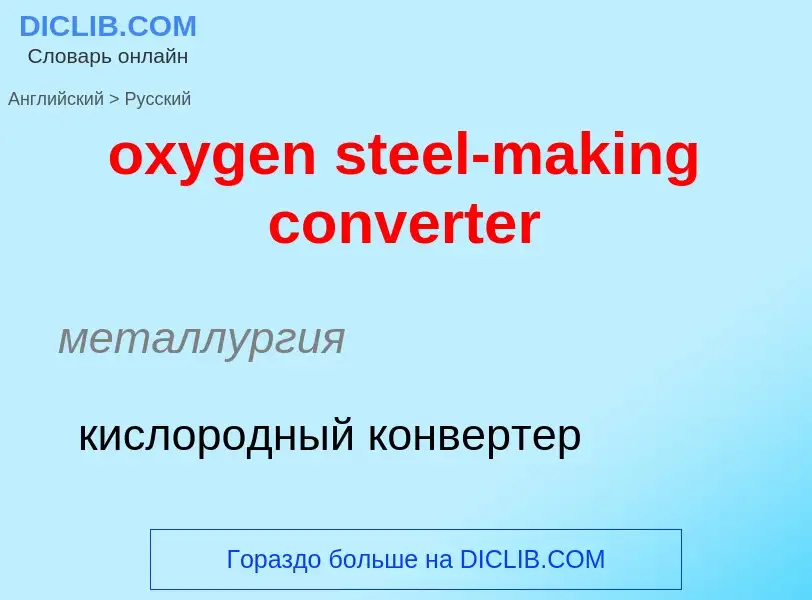Vertaling en analyse van woorden door kunstmatige intelligentie ChatGPT
Op deze pagina kunt u een gedetailleerde analyse krijgen van een woord of zin, geproduceerd met behulp van de beste kunstmatige intelligentietechnologie tot nu toe:
- hoe het woord wordt gebruikt
- gebruiksfrequentie
- het wordt vaker gebruikt in mondelinge of schriftelijke toespraken
- opties voor woordvertaling
- Gebruiksvoorbeelden (meerdere zinnen met vertaling)
- etymologie
oxygen steel-making converter - vertaling naar russisch
металлургия
кислородный конвертер
общая лексика
газообразный кислород
Definitie
Wikipedia

Steelmaking is the process of producing steel from iron ore and/or scrap. In steelmaking, impurities such as nitrogen, silicon, phosphorus, sulfur and excess carbon (the most important impurity) are removed from the sourced iron, and alloying elements such as manganese, nickel, chromium, carbon and vanadium are added to produce different grades of steel. Limiting dissolved gases such as nitrogen and oxygen and entrained impurities (termed "inclusions") in the steel is also important to ensure the quality of the products cast from the liquid steel.
Steelmaking has existed for millennia, but it was not commercialized on a massive scale until the mid-19th century. An ancient process of steelmaking was the crucible process. In the 1850s and 1860s, the Bessemer process and the Siemens-Martin process turned steelmaking into a heavy industry. Today there are two major commercial processes for making steel, namely basic oxygen steelmaking, which has liquid pig-iron from the blast furnace and scrap steel as the main feed materials, and electric arc furnace (EAF) steelmaking, which uses scrap steel or direct reduced iron (DRI) as the main feed materials. Oxygen steelmaking is fueled predominantly by the exothermic nature of the reactions inside the vessel; in contrast, in EAF steelmaking, electrical energy is used to melt the solid scrap and/or DRI materials. In recent times, EAF steelmaking technology has evolved closer to oxygen steelmaking as more chemical energy is introduced into the process.
Steelmaking is one of the most carbon emission intensive industries in the world. As of 2020, steelmaking is estimated to be responsible for 7 to 9 per cent of all direct fossil fuel greenhouse gas emissions. In order to mitigate global warming, the industry will need to find reductions in emissions. In 2020, McKinsey identified a number of technologies for decarbonization including hydrogen usage, carbon capture and reuse, and maximizing use of electric arc furnaces powered by clean energy.








![Oxygen and [[MAPP gas]] compressed-gas cylinders with regulators Oxygen and [[MAPP gas]] compressed-gas cylinders with regulators](https://commons.wikimedia.org/wiki/Special:FilePath/Compressed gas cylinders.mapp and oxygen.triddle.jpg?width=200)




![[[Space-filling model]] representation of dioxygen (O<sub>2</sub>) molecule [[Space-filling model]] representation of dioxygen (O<sub>2</sub>) molecule](https://commons.wikimedia.org/wiki/Special:FilePath/Oxygen molecule.png?width=200)



![2}} is used in [[space suit]]s. 2}} is used in [[space suit]]s.](https://commons.wikimedia.org/wiki/Special:FilePath/STS057-89-067 - Wisoff on the Arm (Retouched).jpg?width=200)



